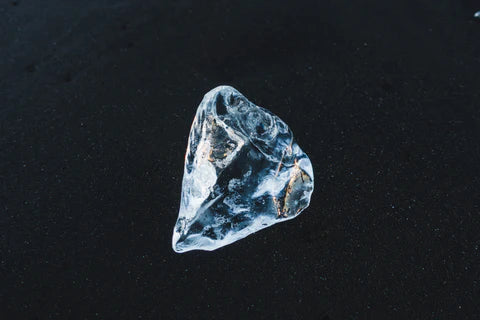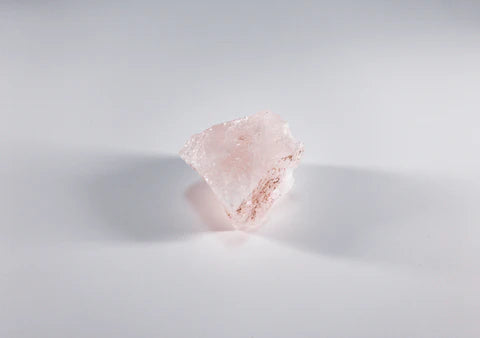

Until now, you might have chosen to buy gemstones based on the birth months they represent. Garnets for January, sapphires for September, citrines for November, and so on. Birthstone jewellery makes for a beautiful, personalised gift, but what if you want to know more about the gemstone you’re about to purchase?
Understanding each stone’s properties and market value helps you make smarter jewellery investments.

Diamond, the most valued gem on the planet
The hardest and most precious gemstone on the list, the diamond is formed in a hot, high-pressure environment around 100 miles beneath the earth’s surface. Praised for its purity and the stone of choice for most engagement rings and wedding rings, the diamond is a beautiful stone worn by both men and women.
Made from: Carbon
It’s worth more when: It’s colourless with minimal inclusions
Fact: The diamond is 58x harder than any other material on earth
Superstition: Created when bolts of lightening strike rocks
Birthstone: April
What’s happening in the market?
The cost of diamonds depends on factors like their shape, cut, clarity, colour And carat weight, (These are the 4 C’s of diamond grading) A one-carat diamond, for example, could sit anywhere between £1200 and £13,000. Diamonds are priced per carat, and these prices increase as weight categories go up. Read up on the diamond grading system to learn more about how diamonds are assessed.
Demand for diamonds hasn’t dropped even through turbulence like financial downturns, wars and new investment opportunities. Rarity determines the value of diamonds, and it’s an investment that’s likely to hold - or increase - in value over time.

Amethyst, the gem said to block the effects of alcohol
A purple semi-precious stone from the mineral quartz family, amethyst is a versatile stone that comes in many different shapes and sizes.
Mineral: Quartz
It’s worth more when: You can’t see inclusions without magnification and it’s a deep red-purple or purple colour
Fact: An amethyst in the GIA Museum weighs 164 lbs
Superstition: Protects its wearer from getting drunk
Birthstone: February
What’s happening in the market?
Amethyst is a stone that’s luxurious enough for royalty and more affordable than diamonds, making it a popular choice for engagement rings and other pieces of jewellery. It’s the most highly valued quartz variety with wide consumer appeal. Its ongoing popularity means this stone is likely to hold value well.

Emerald, Cleopatra’s favourite stone
Back in Ancient Roman times, emerald was used to honour the goddess of love and beauty. Today, this green gem sits within “The Big Four” traditional gems - alongside diamond, ruby and sapphire.
Mineral: Beryl
It’s worth more when: The gem is blue-ish green, bigger and has a marquise cut.
Fact: Elizabeth Taylor’s emerald pendant sold for over £5 million
Superstition: Assists with fertility
Birthstone: May
What’s happening in the market?
You can expect to pay more for Colombian emeralds, which can reach around £80,000 per carat. Emeralds could be a good investment, not just because of their value compared to other stones, but also because of their rich history and extreme rarity.

Topaz, said to have healing, protective powers
In shades ranging from pale yellow to ocean blue to blood red, topaz is a versatile stone that was idolised by the Ancient Romans and Egyptians - and has been popular ever since.
Mineral: Silicate
It’s worth more when: It’s pink or red in colour
Fact: Brazil is the largest producer of topaz (and is the country where you’ll find the biggest ones)
Superstition: Helps to keep mood swings under control
Birthstone: November
What’s happening in the market?
Colourless topaz isn’t difficult to find, making it a relatively affordable gemstone. Prices vary depending on factors such as colour, shape, size and chemical impurities, with Imperial Topaz sitting at the higher end of the spectrum. This stone can pull in more than £3000 per carat, and estimates say only 1% of topaz stones fall into this premium category.

Sapphire, precious & luxurious
Most people think of sapphire in its royal blue form, but this stone actually comes in a rainbow of colours. Sapphire is second only to diamonds on the hardness scale, making it a good alternative for engagement rings.
Mineral: Corundum
It’s worth more when: It boasts vivid colour saturation and high clarity
Fact: Sapphires are a symbol of royalty, from being worn by medieval kings to being given to Kate Middleton by Prince William in his 2010 proposal
Superstition: Can help wearers predict the future; evokes kindness
Birthstone: September
What’s happening in the market?
Blue sapphires with extremely high clarity are rare, and therefore very valuable. If a stone has so many inclusions that its durability is compromised, this takes away from its value.
As one of the “Big 3” coloured gemstones, sapphires may make for a good investment. Global demand stays high, meeting an ever-decreasing supply, and predictions for sapphire future price trends are positive.

Ruby, keeping tradition alive
Ruby is a durable gem that travel
s from pinkish-red to blood-red in colour. This is a traditional gem that never lost its appeal over time, and still today is often given as a gift to symbolise love and friendship.
Mineral: Corundum
It’s worth more when: It’s a pure red colour (without overtones of orange or purple) that isn’t too dark or too light. It also doesn’t have inclusions that diminish the stone’s brightness
Fact: Some inclusions are expected in rubies. If a ruby has zero inclusions, it’s probably a fake
Superstition: Protects its wearer from evil
Birthstone: July
What’s happening in the market?
Rubies consistently perform well, increasing in price by an average of 8% every year. In the last 3-5 years, the price hike of rubies has been extremely impressive - particularly with rubies from Burma and Mozambique.
The world’s most expensive ruby, known as the “Hope Ruby” sold for $6.75 million and weighed 32.08 carats.
Tourmaline, the colourful gem
Tourmaline presents itself in all sorts of different colours, with bi-colour and tri-colour gems that showcase more than one colour together, including the “watermelon tourmaline”. Many believe tourmalines have unique healing properties based on their colour. Black tourmaline is said to repel negativity, while pink tourmaline is said to bring calm to anxious people, for example.
Mineral: Crystalline silicate
It’s worth more when: It’s a rarer colour, such as pure blue, red, orange, yellow or purple, or it’s a colour-change stone
Fact: It’s the amount of copper and manganese that creates different colours
Superstition: Tourmaline passed over a rainbow when it rose up from the centre of the earth, and that’s how it became so colourful
Birthstone: October (usually pink tourmaline)
What’s happening in the market?
“Paraiba” is the rarest and most expensive tourmaline, with a green and blue hue complete with traces of copper. You won’t find this often, so grab it with both hands if you do. To invest smartly, look for high-quality tourmalines or those that are recently discovered. New discoveries are often cheaper because of large supply, but grow in demand over time.
Estimating the price of tourmaline is tricky, with costs going from $50 per carat all the way to $10,000 per carat (and even more for true Brazilian Paraiba).
Opal, “The Queen of Gems”
Opal was awarded the nickname “The Queen of Gems” in ancient times because every colour of the visible spectrum can be found within each stone. From delicate pink to deep blue, tiny spheres of silica dioxide impact the colour we see.
Declared the National Gemstone of Australia in 1994, the world’s finest opal comes to us from down under.
Mineral: Silica
It’s worth more when: It’s a black opal - these are extremely rare and hold the highest value. The price of opal increases when it’s brighter, has a particularly rare pattern, or has a darker body tone
Fact: Usually has a water content between 6 and 10%. Opals have also been found on Mars
Superstition: Thought to stimulate imagination, dreams and spontaneity
Birthstone: October
What’s happening in the market?
Opal is a rare gem that’s expensive to mine for, but it’s more affordable than you might think. Tight restrictions around opal mining mean there’s uncertainty around supply. This creates a sizeable demand/supply wedge, so a premium opal is unlikely to decrease in value in the near future.
Garnet, use & ornament since the Bronze Age
People in the stone age used garnets as both gemstones and abrasives. Red garnets are the most common (and probably the colour that springs to mind when you think about the stone) but they’re available in a variety of shades. Blue garnets are the rarest types.
This gem has a high refraction index, so it continuously emits light and radiates well against yellow gold jewellery.
Mineral: Silica
It’s worth more when: It’s found as a rarer colour, such as peach, green, blue or even colourless
Fact: The name “garnet” comes from an old Latin word for “pomegranate” because garnets often resemble the colour of pomegranate seeds
Superstition: Garnet is said to ward off nightmares and balance the energy system
Birthstone: January
What’s happening in the market?
Although garnets aren’t officially rated by the GIA, their price depends on the factors you’d expect - colour, clarity, cut and carat. Larger stones with few inclusions and vivid colour can pull in anywhere between £1500 and £5500.
Right now, garnet is re-emerging as a popular stone (after being a must-have in the 1500s and dropping slightly in popularity in the 1800s.) It’s versatile and more affordable than ruby, so many jewellers are incorporating this gem into their pieces.
Rare garnets make for the best investments. Look out for tsavorite garnets from East Africa, and mandarin garnets from Nigeria and Namibia.

Aquamarine, inspired by the sea
Roughly translated to “water of the sea” aquamarine is a pale blue or pale-green stone that makes a beautiful gift for anyone that loves the ocean.
Mineral: Beryl
It’s worth more when: It’s a deep blue shade
Fact: Eleanor Roosevelt was gifted an aquamarine from the Brazilian government, which weighed over 1298 carats
Superstition: Thought to protect sailors at sea, and to prevent seasickness
Birthstone: March
What’s happening in the market?
Naturally-occurring stones are rarer than lab-grown aquamarine, so are more expensive. Since aquamarines are readily available in large sizes, bigger stones don’t necessarily equate to a higher value. In fact, setting such large stones is difficult, so there’s not as much demand for them.
In general, aquamarine has a modest price tag and isn’t too difficult to find. Anyone interested in investing in aquamarine should look for rare varieties with a good depth of colour.
Citrine, with its citrussy hues
Citrine is French for “lemon”, which makes perfect sense considering this gemstone is found in a selection of citrus-like colours. This gemstone was popular in Ancient Greece and is still one of the most sought-after yellow stones today.
Mineral: Quartz
It’s worth more when: Its colour is more intense and inclusions are minimal
Fact: 17th-century Scots decorated their weapons with citrine
Superstition: Said to awaken creativity and protect against evil thoughts, citrine is widely known as “a gift from the sun”
Birthstone: November
What’s happening in the market?
Naturally occurring citrine is rare - be wary of investing in synthetic or replica citrine. There’s no notable rise in carat value with larger citrines, but custom cutting will increase cost (just like with most gemstones).
For one-on-one advice on investing in jewellery, contact Trilogy Jewellers on 0203 9298227. Otherwise, visit our Hatton Garden store to browse the available collection.
This article is intended for informational purposes only and should not be taken as investment advice.
TRILOGY ON YOUTUBE
Follow Trilogy on YouTube for regular updates and reviews of luxury watches and jewellery.
